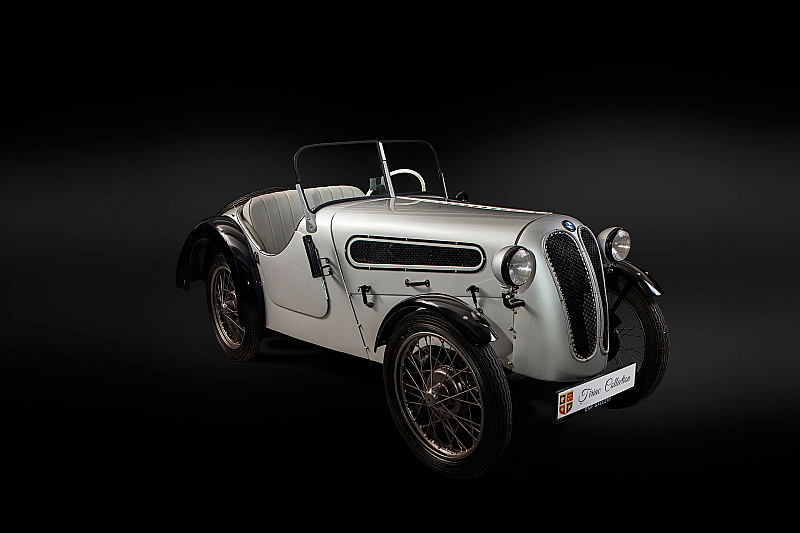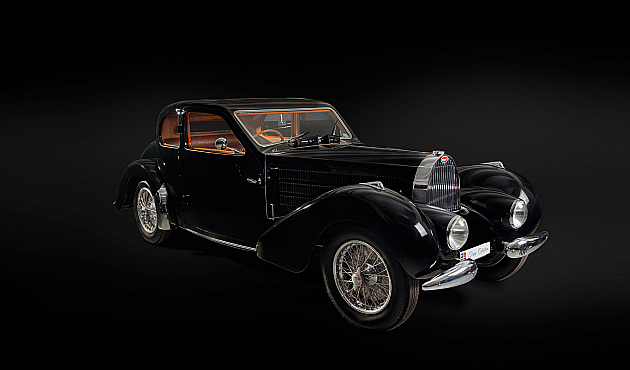Istorie
Dixi a fost primul automobil realizat de BMW, dar nu este la origine un nume BMW. Dixi a fost o marca germana utilizata pe masinile produse de Automobilwerk Eisenach (fabrica auto de la Eisenach) incepand din 1904. Dupa primul Razboi Mondial, compania a avut probleme financiare serioase, iar BMW a cumparat brandul Dixi in octombrie 1928.
Descriere
Compania BMW (Bayerische Motoren Werke AG) a luat fiinta ulterior restructurarii companiei aviatice Rapp Motorenwerke in 1917. La finalul primului Razboi Mondial, in 1918, compania BMW a fost obligata prin Tratatul de Pace de la Versailles sa inceteze productia de aeronave. Odata ce restrictiile au inceput sa fie ridicate, BMW a trecut la productia de motociclete (in 1923) si a continuat cu productia de automobile in 1928 – 1929.
Dixi a fost primul automobil realizat de BMW, dar nu este la origine un nume BMW. Dixi a fost o marca germana utilizata pe masinile produse de Automobilwerk Eisenach (fabrica auto de la Eisenach) incepand din 1904. Dupa primul Razboi Mondial, compania a avut probleme financiare serioase, iar BMW a cumparat brandul Dixi in octombrie 1928.
Automobilwerk Eisenach a decis sa intre pe piata masinilor de segment mic dupa Razboi, iar in 1927 a semnat un contract de licenta cu Austin Motor Company pentru productia unei versiuni proprii a modelului Austin 7. A fost stabilit un volum de productie de 2.000 de masini pe an, iar Dixi platea catre Austin o redeventa pentru fiecare unitate produsa. Primele 50 de masini au avut volan pe partea dreapta si au fost asamblate incepand cu septembrie 1927 din subansamble oferite de fabrica Austin din Longbridge. Incepand cu decembrie 1927, Dixi a produs versiunea proprie a modelului Seven: modelul Dixi 3/15 DA-1, construit cu volan pe partea stanga din piese produse intern la Eisenach. Numele modelului indica nivelul de taxare de la acea vreme: 3 CP taxabili pentru o putere maxima reala de 15 CP. "DA-1" este acronimul pentru Erste Deutsche Ausfuehrung (Prima versiune germana).
Dupa ce BMW a cumparat fabrica din Eisenach, in 1928, Dixi 3/15 DA-1 a devenit BMW Dixi 3/15 DA-2 sau pur si simplu BMW 3/15 DA-2.
Motorul cu supape laterale folosit de Dixi avea 15 cai putere si permitea o viteza maxima de 76 km/h. Acesta avea un carter din aluminiu si bloc motor si pistoane din fonta. Racirea se realiza prin termo-sifon, fara pompa de apa.
Acest exemplar este echipat cu o caroserie speciala „Ihle”. Fratii Rudolf si Fritz Ihle erau carosieri din Bruchsal, Germania. Clientii isi puteau achizitiona kitul pentru a-l asambla singuri sau puteau incredinta masina pentru recarosare uzinei din Bruchsal.
Acest exemplar are 18.656 de kilometri la bord.
1928 BMW Dixi 3/15 DA-2
Technical Data Historical Facts
Chassis no. 9168 The Dixi was the first car made by BMW, but it wasn't originally a BMW nameplate. Dixi was a german brand used for the cars produced by Automobilwerk Eisenach (Eisenach car factory) starting in 1904. However, after the First World War, the company had serious financial problems and subsequently, BMW bought the the Dixi brand in October 1928.
Engine type: in-line 4-cylinder
Displacement: 747 cc
Output: 15 HP
Transmission: 3-speed manual
Bayerische Motoren Werke AG (Bavarian Motor Works), commonly known as BMW, was established as a business entity following a restructuring of the Rapp Motorenwerke aircraft manufacturing firm in 1917. After the end of World War I in 1918, BMW was forced to cease aircraft-engine production by the terms of the Versailles Armistice Treaty. The company consequently shifted to motorcycle production in 1923, once the restrictions of the treaty started to be lifted, followed by automobiles in 1928–1929.
The Dixi was the first car made by BMW, but it wasn't originally a BMW nameplate. Dixi was a german brand used for the cars produced by Automobilwerk Eisenach (Eisenach car factory) starting in 1904. However, after the First World War, the company had serious financial problems and subsequently, BMW bought the the Dixi brand in October 1928.
Automobilwerk Eisenach decided to enter the small car market after the war and in 1927 they signed a licensing agreement with the Austin Motor Company to build a variant of the Austin 7. A production level of 2000 cars a year was agreed upon, and Dixi paid Austin a royalty on each vehicle produced. The first fifty Eisenach-built Sevens were right-hand-drive cars assembled in September 1927 from parts provided by Austin's factory in Longbridge. By December 1927, Dixi had begun building their version of the Seven: the left-hand-drive Dixi 3/15 PS DA-1, built from parts made inernally in Eisenach. The 3/15 designation was derived from a taxable horsepower rating of 3 PS with an actual power output of approximately 15 PS (11 kW; 15 hp) The DA-1 designation stood for Erste Deutsche Ausfuehrung (First German Version).
After BMW bought Fahrzeugfabrik Eisenach in 1928, the Dixi 3/15 PS DA-1 became the BMW Dixi 3/15 DA-2 or, increasingly, simply as the BMW 3/15 DA-2.
The side-valve engine of the Dixi had 15 hp and 76 Km/h top speed. It was composed of an aluminium crankcase, cast iron cylinder block and cast iron cylinder head. Cooling was by thermo siphon, without




